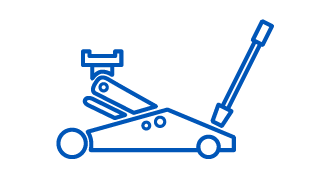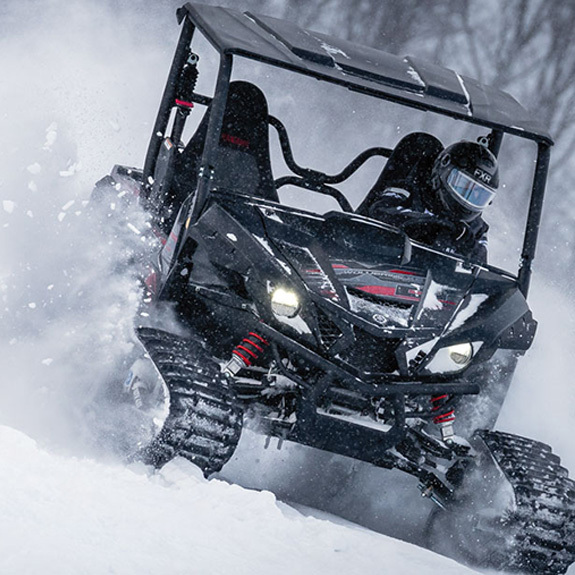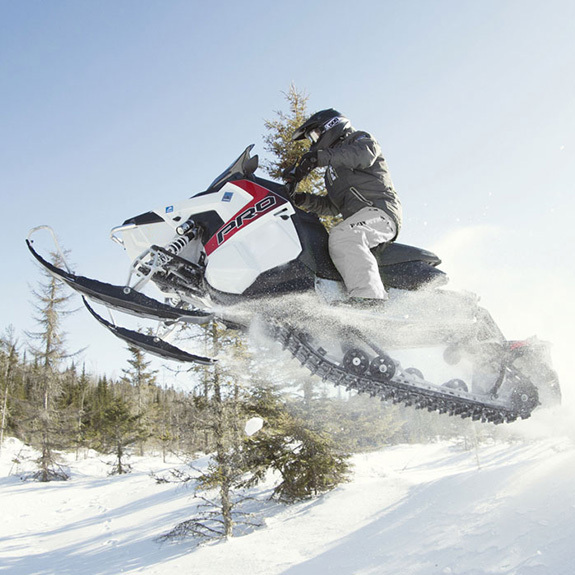How to inspect your snowmobile track
To perform and maneuver properly, cars need correct tire pressure. And when it comes to snowmobiles, they need correct track tension. Regularly adjusting your track tension and alignment will help prevent problems like premature or excess wear and even detracking (a.k.a. your track getting misaligned with the rest of the undercarriage).
Keep in mind that riding in warmer weather or low snow conditions – such as on a lake with bare ice – will reduce the natural lubrication that usually happens with snow to cool down the engine. This generates more heat, which can lead to premature track failure.
How often you should check your track?
Always follow the OEM’s recommendations for maintenance. But as a general rule, we recommend taking a new track out for a 50 miles ride first then check track tension to ensure it is within specifications of your owner’s manual. After this initial break-in, inspecting your track every 300 to 500 miles should do the trick (unless your sled is turbocharged – you’ll need to check it more often). Furthermore, we recommend checking it at the beginning of every season.
Tools you’ll need to have on hand for ideal track inspection:
• Floor jack

• Track tension tool (gauge)

• Lubricants

• Oil

Steps for inspecting and adjusting your snowmobile track:
1. Raise the rear of the sled with a jack stand and visually inspect the track. Jacking your sled will make it easier to inspect the entire track and lugs. Remove the belt and rotate the track by hand.
Look for any tears, missing lugs or studs, shredding, etc. Minor issues aren’t usually cause for immediate concern but can eventually lead to damage to the whole track.
Missing or tears in lugs is a clear sign your track will soon need replacing. (Remember: the more wear in profiles, the less traction.
If you see tears across the entire width of a rubber track, replace the track right away – chances are it won’t be strong enough to withstand regular use. If you have a studded track, check for torn or missing studs. Depending on the track manufacturer, you can usually get away with a few missing studs without significantly hindering performance: for Camso tracks, you can get away with 10 to 15 missing studs. If you’re using aftermarket studs, contact your local dealer to replace them.
Seeing premature or excessive wear or damage on your track? You might be using the wrong track for your riding style. Refer to our snowmobile track brochure to see which type of track is right for you.
2. Check the clips. Look for any damage or wear, which are common over time. Always replace any worn, bent, cracked or missing clips. You can buy them from your dealer.
3. Check the track tension and adjust following OEM recommendations. Use a gauge/track tension tool to measure tension. See our 5-step guide for measuring track tension for step-by-step instructions.
4. Check the wheel bearings. If they don’t roll freely, lubricate them as per OEM recommendation. If the bearings are stuck, replace them. (Sealed bearings won’t need lubrication).
5. Check the track alignment. It should be evenly aligned on both sides. If not, it can cause wear on drive lugs, metal clips and wheels, and even decrease power. Rubbing against the tunnel can also can cause premature wear on the track.
Time to replace your track? Check out Camso’s 2021 snowmobile tracks.
Final piece of advice: adjustments are sometimes needed mid-ride, so always take your toolkit with you. Most machines come with a basic toolkit, make sure to keep it handy.
Still have questions? Make sure to contact your local Camso dealer for more information.



























